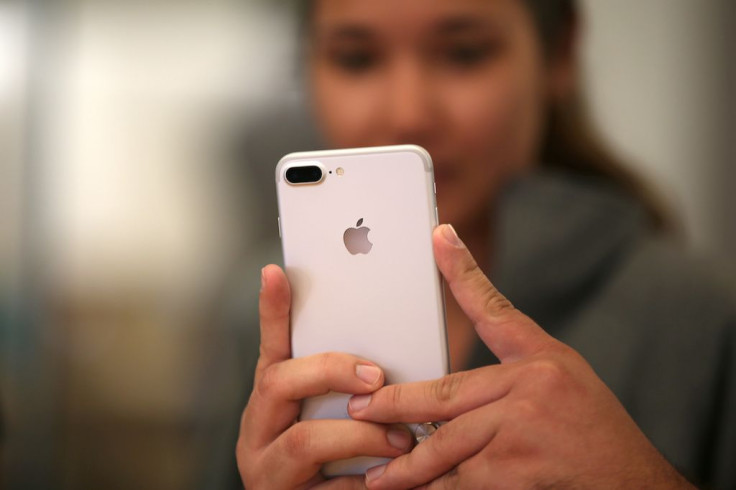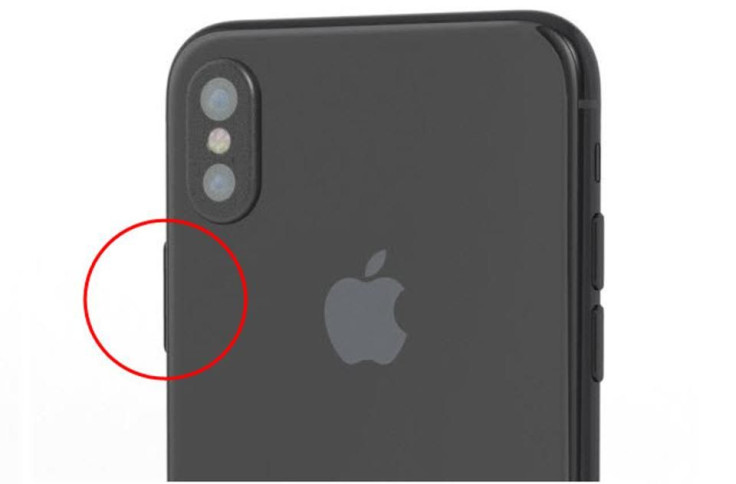iPhone 8 Final Design: Power Button Might Double As Touch ID Fingerprint Sensor

Rumors surrounding Apple’s iPhone 8 have been circulating wildly on the internet over the last couple of weeks, but now the smartphone’s final design might have already been leaked. A new set of CAD renders has been shared online, showing off what might be the final design of Apple’s iPhone 8.
These new renders for the iPhone 8 were shared by Forbes’ Gordon Kelly, who collaborated with case designer Nodus. The new renders all fall in line with most if not all previous leaks and rumors.
The iPhone 8 will comes with a bezel-less design thanks to its 5.8-inch OLED display. The top portion has a cutout for the front-facing cameras, sensors and the earpiece. The front home button is definitely out of the iPhone 8, but Touch ID isn’t going anywhere.
The iPhone 8 will arrive with a bigger sleep/wake/power button on its right side. An exact measurement for the button on the iPhone 8 wasn’t given, but it should almost be double the size of the current button that’s on the iPhone 7 Plus.

READ: Apple Allegedly Still Struggling To Put Touch ID Inside iPhone 8's Display
The reasoning behind this might be to make it more comfortable to use with one hand, but Forbes’ report suggests another important reason for the design change. Apple might be making the sleep/wake button on the iPhone 8 bigger to make room for the Touch ID fingerprint sensor.
We’ve been hearing/seeing a lot of rumors, speculation and leaks that Apple is still having trouble putting its Touch ID fingerprint sensor on the OLED display. Apple could solve this issue by simply putting the Touch ID sensor right on the sleep/wake button of the iPhone 8.
This would be similar to Sony’s Xperia smartphones, which have the power button on the side double as the device’s fingerprint scanner. This would be a perfect and unobtrusive solution for Apple if it’s still unable to embed the TouchID sensor right in the iPhone 8’s OLED display.
Last month, Apple was granted a patent for an alternative Touch ID button location, as pointed out by BGR. The patent illustration shows an iPhone without a home button, while the Touch ID has been placed on the sleep/wake button.

READ: iPhone 8 Rumors: Apple Struggling With Factory Hardware Quality Ahead Of Fall Launch
It’s very possible that this is part of Apple’s “Plan B” if it were unable to put the Touch ID sensor right into the iPhone 8 display. It would certainly be a lot better than a rear-mounted fingerprint sensor, which could have been seen by long-time fans as a poor design choice.
A pair of vertically-placed dual cameras is placed on the back. The pill-shaped camera module also houses the LED flash, which sits right between the two lenses. Switching from the iPhone 7 Plus’ horizontal dual cameras, to a vertically aligned pair of cameras for the iPhone 8 is part of Apple’s augmented reality ambitions.
The vertically aligned dual cameras on the iPhone 8 should help in better supporting AR technologies. The idea here is that users are expected to hold the device in landscape position when using AR. When in landscape, the cameras will then be horizontal, which is believed to help in making augmented reality more effective.
Although it’s not seen in any of the renders, the iPhone 8 will still come with Apple’s proprietary Lightning connector. Apple has been using USB Type-C for its most recent MacBooks, which is why a lot of people thought Apple would be putting it on the iPhone 8.

Although a USB-C port won’t be arriving on the iPhone 8, it’s still possible that the device could ship with a Lightning-to-USB Type-C cable. However, there’s really no evidence to support that just yet. Another thing to point out here is that the 3.5mm headphone jack won’t be returning for the iPhone 8.
None of these have been confirmed by Apple, but Forbes says that Nodus was confident enough that it allowed to be publicly disclosed as its source. The iPhone 8 is expected to be announced by Apple sometime in September.
© Copyright IBTimes 2024. All rights reserved.





















